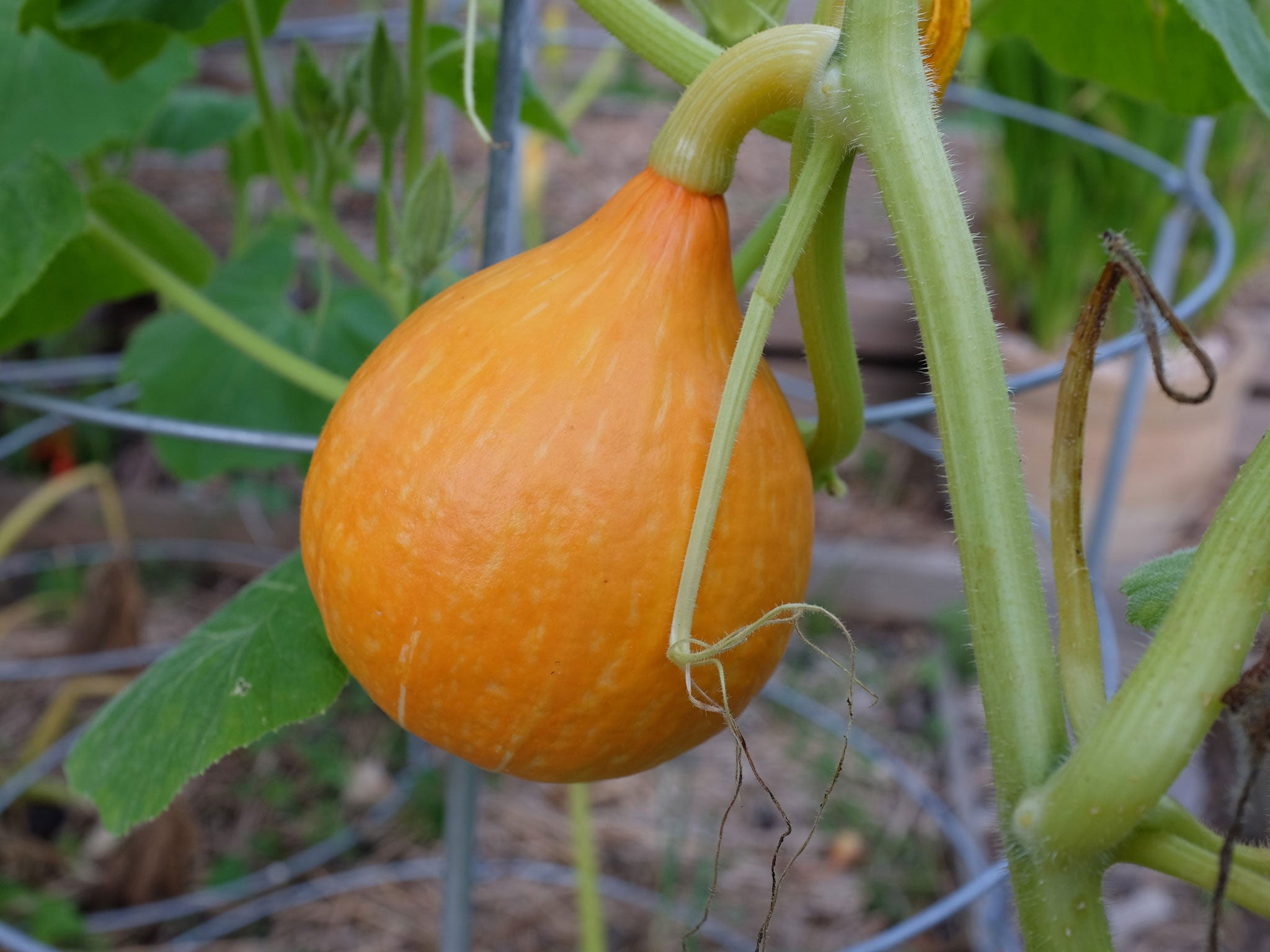How to make the most of your vegetable garden in autumn
Summer can be a frustrating time for gardeners, but autumn brings with it new opportunities to grow exciting combinations for tasty salads. The key to a successful crop is timing

In June, I was talking to a Massachusetts gardener about the rigours of getting vegetables such as cabbage and lettuce through the impending heat, and she spoke of avoiding planting during the “hot spell.” It seemed pointless to explain that in the mid-Atlantic, we know the hot spell as “summer”, and it lasts for months instead of weeks.
With another hot spell under my belt, I can say that it has simply fulfilled its promise of unpredictability and disappointment. Of the three growing seasons in the Washington vegetable garden (four if you count overwintering spinach, garlic and leeks), I find summer the least rewarding, and this year the early-season rain helped the garden but not the sweat-drenched gardener. Now it’s dry, and the mildew has arrived.
My churlishness may annoy other gardeners who revel in summer's bounty – the endless courgette, the pop-in-your-mouth cherry tomatoes, the green beans so delicious you can eat them raw. There are sweet moments, granted, but to me each gardening session since early June has begun with the irritating quandary of what to slather on first, the sun lotion or the bug repellent. And where did I put my hat? And did I bring enough chilled water?
The next eight to 10 weeks are a form of reward for that.
Because I was away for much of August, I pulled the tomatoes early – a good crop, but blight was lurking – and focused on my ingenious plan to festoon the entire garden with winter squash vines grown vertically on oversize tomato cages and on makeshift rigging.
The vines would be at an early stage of development during my absence, and I would return to nurse them to late-summer glory. This turned out to be a miscalculation.
The Waltham butternut squash on the arbour did not achieve the wall of vegetation I had planned because of uneven vigour. The red kuri squash looks all right on the cages, but some of the vines appear wilted by the squash vine borer. In another bed, an entire row of cucurbits turned into a complete bust. The seed was either bad or, more likely, eaten by burrowing rodents.
I sowed them (the seeds, not the rodents) in late July, which was pushing it. But a potentially tardy crop came to naught. The honey boat delicata failed entirely to appear. So one moves on to an autumn season that, with a little protection on a couple of early frost nights, can last into December.
The keys to success are timing and luck. If you sow spinach in mid-August, you can expect a decent crop before it freezes. If you wait until late September, you're more likely to get seedling growth in the autumn and a really good early-spring crop from it. Both sowings pay dividends.
I put down seed of a dwarf bok choy on 6 August, but that was too early. The greens are now ready, yet somewhat heat-stressed, and they must be harvested before they go to flower, which is imminent. I sowed a replacement batch last weekend in the hope it will mature in cool October.
The next weekend or two will offer a brief window to sow lettuce, late enough for the soil to have cooled but early enough for varieties to mature before a hard freeze. Heading varieties love the bright days and cooling nights of autumn. Lettuce germination falls off sharply in soils above 21C. My soil is now in the high teens, and I'm rummaging around the fridge to see what lettuce varieties I have on hand. Lettuce seed is good for three years if refrigerated, though the older stocks should be sowed more thickly.
While I was waiting for the soil to cool, I turned to sowing salad green mixes that didn't contain lettuce varieties. Then I played seed merchant, making my own mesclun medleys from available material. To a mix of Asian mustard greens, I added some arugula seed. To a mix of mustard greens, mizuna and kale, I added more kale and some radicchio. Because you harvest these greens on the small side, the usual considerations of spacing and size differences don't apply.
The autumn garden is also relatively pest-free. You don’t see the levels of flea beetle on the arugula or harlequin bugs or white fly on the kale that you would earlier in the year. The only problem is a lack of rain, which sometimes goes unnoticed because temperatures are cooler. In September, I am obsessive about keeping the seed beds moist. I have mulched them lightly with chopped straw.
I also planted pure stands of red Russian and black Tuscan kale, two predictable varieties but reliable and pretty staples of the autumn garden. I put in some turnips as well, after a span of many years without. We'll see whether sweet, garden-fresh fall turnips are as good as I remember.
As a final act of booting out the summer, I pulled a couple of cherry tomato vines and sowed coriander in their narrow bed.
There are clear signs that nature is wrapping up for the season: migrating warblers are passing through, and the monarch butterflies, too, are on the march. Though one can’t help but feel that in the leafy vegetable plot, the best is yet to come.
© The Washington Post
Subscribe to Independent Premium to bookmark this article
Want to bookmark your favourite articles and stories to read or reference later? Start your Independent Premium subscription today.

Join our commenting forum
Join thought-provoking conversations, follow other Independent readers and see their replies